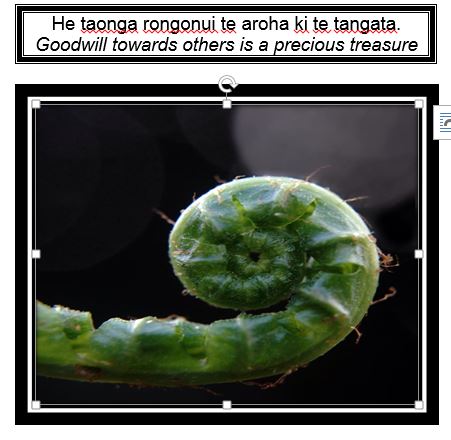The Concept of Manaakitanga
A PERSONAL REFLECTION THROUGH THE EYES OF A LEADER
Previously I looked at the concept of Manaakitanga through the eyes of a teacher. As a leader in the education system I also need to look at this important concept through the leadership lens. Manaakitanga through this lens is about leading with moral purpose.
Harris (2009) described leadership as being “primarily about influence and change, about providing “spaces” and ‘opportunities’ for creative, future leaders to develop.” In order to do this leaders need to develop professional relationships across a range of stakeholders, develop strong lines of open communication, learn alongside others in their setting and lead by example. Gone are the days when effective leadership of school consisted of the headteacher or principal sitting in an office all day, seeing the occasional student for matters of discipline. Today the role is much more hands on, or as I like to call it, organic. Great leaders make a difference to outcomes by rolling up their sleeves and getting involved with the nitty gritty of education. Vivianne Robinson refers to this as a focus on ‘pedagogical leadership’, arguing that “the more leadership is focused on the core business of teaching and learning the greater the impact on student outcomes”. Student outcomes is after all what it’s all about so it makes sense that there should be a focus on this from the leaders. Not rocket science, right?
Robinson goes on to identify five dimensions of leadership and the effect size they have on student outcomes:
- establishing and communicating learning goals and expectations (0.35)
- strategic resourcing allocated to priority teaching goals (0.34)
- direct involvement by leaders in planning, coordinating and evaluating teaching and curriculum (0.42)
- promoting and participating in teacher learning and development (0.84)
- ensuring an orderly and supportive environment so that teachers and students can focus on teaching and learning. (0.27)
As a leader I have to interact closely with data, pour hours of time and energy into reports and analysis of numbers and effect sizes, but this isn’t what will make the real difference. Sure it’s an important element but it’s the relationships, communication and interaction with people and the learning and development that makes the real difference, energises me and builds credibility.

The model here identifies four qualities that underpin successful leadership. One of these is manaakitanga. Put simply this concept relates having integrity, ensuring that decision making is ethical and contributes to building a culture of trust, respect and openness. Successful leaders manage interactions with stakeholders with Manaakitanga. They have knowledge, understanding and sensitivity to differing cultures, experiences and world views of those in their setting, but more than this, they are committed to making a difference by researching what works, what is right and what is best for students and the school. As leaders, we need to have a commitment to ensuring what is best for learners so that all learners can achieve their potential. Great leaders, in my opinion, inspire you go beyond your potential. Their belief and commitment to you enables you to be a better you.
If this sounds all warm and fuzzy and leads you to believe that being a leader is easy, stop right there. Leaders work with people. People are complex. Some would benefit student outcomes by changing practices and some are resistant to change. When practice needs changing it calls for some challenging conversations. Engaging in open to learning conversations where parties are open to listening, changing thinking, checking assumptions is essential if we are to continue to act with integrity. Manaakitanga- leading with a moral purpose- means we have to have those tough talks and they don’t leave us feeling warm and fuzzy.

Does knowing this impact on my leadership? I would like to think so. There comes a time when situations test you and what you believe in. There are things that, for me, are non-negotiable. Those things I stand with my back to the wall and come out fighting for; Assessment for learning, visible learning, student well-being, student voice, agency and restorative justice practices are just a few. These practices not only make a difference, they have HUGE impact on student outcomes. Our core purpose. Yes, during my time in leadership in New Zealand schools there have been times when I have been ‘challenged’ on these beliefs, but with these beliefs comes a passion, research and manaakitanga.
References:
Robinson, V., Hohepa, M., & Lloyd, C. (2009). School Leadership and Student Outcomes: Identifying what works and why. Best Evidence Synthesis Iteration (BES). Wellington: Ministry of Education.
Leading from the middle: educational leadership for middle and senior leaders. M.O.E
Kiwi leadership for principals: principals as educational leaders. M.O.E.
Bezzina, M (2007) Moral purpose and shared leadership: The leaders transforming learning and learners pilot study Australian Catholic University


1ChattyTeacher a really well written, thoughtful blog. Most helpful.
LikeLiked by 2 people
Thank you Jan.
LikeLike